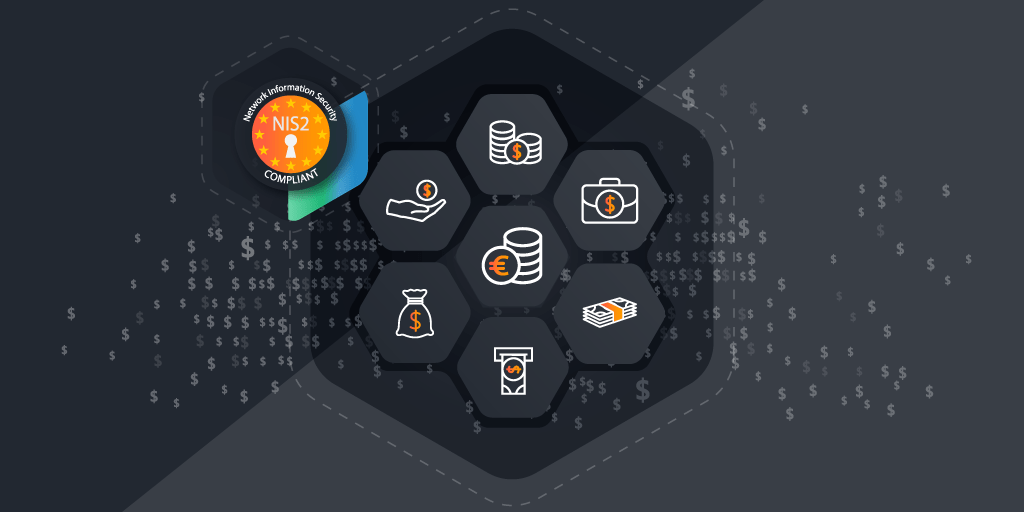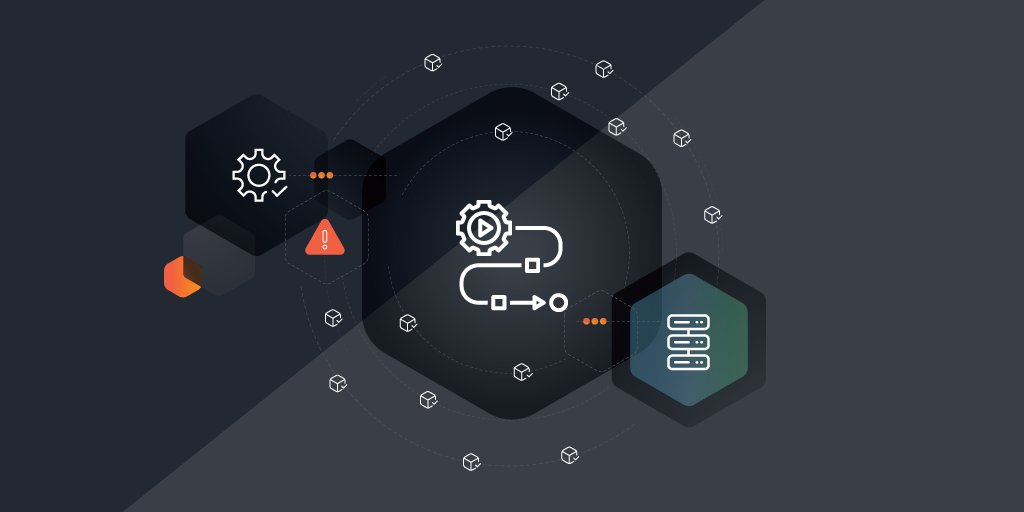
The impact of cyberattacks on financial institutions can be devastating, leading to significant financial losses, reputational damage, and regulatory penalties. Cybercriminals often target financial institutions to steal sensitive information, disrupt services or commit fraud. High-profile attacks, such as the SWIFT network heist and various ransomware incidents, have highlighted the vulnerabilities within the sector. These attacks not only affect the targeted institutions but can also undermine trust in the entire financial system.
This is the challenge NIS2 aims to tackle. Implementing NIS2 compliance in the finance sector offers numerous benefits. By adhering to the directive’s requirements, financial institutions can improve their overall cybersecurity posture, reducing the likelihood of successful cyberattacks. Automated compliance checks and real-time threat detection capabilities help minimize administrative burdens and human errors, ensuring more efficient and effective security management. Additionally, NIS2 compliance fosters a culture of security awareness within organizations, as employees receive regular training on cybersecurity best practices and compliance requirements.
In this post we’ll take a deep dive into NIS2 for Finance, including who’s required to comply, the consequences of non-compliance, best practices for compliance and how Lansweeper can support your NIS2 compliance efforts.
What Does NIS2 Stand For?
NIS2 stands for the Network and Information Security Directive 2, an updated regulation by the European Union aimed at enhancing cybersecurity across various sectors. It builds upon the original NIS Directive, expanding its scope and introducing stricter security and incident reporting requirements. The directive aims to improve the overall level of cybersecurity within the EU by addressing the growing complexity and scale of cyber threats.
The NIS2 regulation mandates that essential and important entities within various sectors, including energy, transport, health, and manufacturing, adopt robust cybersecurity measures. These measures include comprehensive risk management, real-time threat detection, and stringent incident reporting protocols. The regulation also emphasizes the need for organizations to ensure the security of their supply chains and third-party service providers. By enforcing these requirements, NIS2 seeks to create a more resilient and secure digital environment within the EU.
What About DORA?
The Digital Operational Resilience Act (DORA) is a regulation that applies specifically to financial institutions. DORA is intended to improve operational resilience among financial institutions by ensuring they can continue to operate despite a cyber attack. Many financial institutions may already be adhering to DORA standards, and these may actually exceed the standards set forth by NIS2. In the case that DORA meets or exceeds the cybersecurity protection that the NIS2 Directive provides, organizations should rely on those rules rather than the NIS2 Directive. This helps to avoid redundant compliance efforts and enables organizations to focus on the regulations that are most relevant to their unique operational needs.
Key Changes and Requirements in NIS2 for Finance Institutions
As cyber threats become increasingly sophisticated and pervasive, it is crucial for financial entities to understand and comply with these new regulations to protect their operations and maintain trust in the financial system. Key changes and requirements in NIS2 for Finance institutions include:
- Expanded Scope and Coverage: NIS2 significantly broadens the range of entities that fall under its purview, including a wider array of financial institutions. This means that not only major banks but also smaller financial entities, payment services, and digital wallets are now required to comply with the directive. This expansion ensures that all critical components of the financial sector are covered, enhancing the overall cybersecurity landscape.
- Enhanced Security Measures: Financial institutions must implement more robust cybersecurity measures, including comprehensive risk management practices and real-time threat detection systems. The directive emphasizes the need for a risk-based approach, tailored to the specific threats and vulnerabilities of each institution. This includes securing both IT and operational technology environments, as well as third-party services and supply chains.
- Stricter Incident Reporting: Under NIS2, financial institutions are required to report significant cyber incidents to national authorities within tight timeframes. This prompt reporting enhances transparency and enables quicker responses to threats. Institutions must establish clear incident response procedures and ensure that all employees are trained to recognize and respond to cyber incidents effectively.
- Governance and Accountability: The directive introduces stricter governance and accountability requirements. Financial institutions must designate responsible individuals for overseeing compliance with NIS2 security practices. This includes ensuring that senior management is involved in cybersecurity decision-making and that there is a clear chain of responsibility within the organization.
- Regular Audits and Compliance Checks: NIS2 mandates regular audits and compliance checks to ensure that financial institutions continuously adhere to the directive’s requirements. These audits help identify gaps in cybersecurity measures and provide an opportunity for institutions to rectify any deficiencies. Automated compliance tools can assist in maintaining ongoing adherence and reducing the administrative burden.
- Cooperation and Information Sharing: The directive encourages greater cooperation and information sharing among financial institutions, regulatory bodies, and other stakeholders. By sharing threat intelligence and best practices, institutions can collectively enhance their cybersecurity defenses and respond more effectively to emerging threats. This collaborative approach is vital for building a resilient financial sector capable of withstanding sophisticated cyberattacks.
With all of these added requirements, many finance institutions are struggling to comply.
Consequences of Non-Compliance with NIS2 in Finance
Non-compliance with the NIS2 Directive can lead to severe consequences, both in terms of financial penalties and reputational damage.
Regulatory authorities are empowered to impose substantial fines on organizations that fail to meet the directive’s stringent cybersecurity requirements. These fines can be significant, potentially reaching millions of euros, and can have a considerable impact on an institution’s financial stability. Additionally, non-compliance may result in increased scrutiny from regulatory bodies, leading to more frequent and rigorous audits and assessments, further straining resources and operational capabilities.
For example, a recent real-world example of a cyberattack in the finance industry occurred in February 2024 when Bank of America experienced a significant data breach. The breach was traced back to a cyberattack targeting Infosys McCamish Systems, a third-party service provider. This attack compromised sensitive customer information, including names, social security numbers, and account details of over 57,000 individuals. The financial impact of this breach was substantial, encompassing immediate costs for forensic analysis, legal fees and customer notification, as well as longer-term repercussions such as reputational damage and increased cybersecurity investments.
Additionally, the broader financial implications of cyberattacks on the industry are illustrated by the rising costs associated with such breaches. For instance, the average cost of a data breach in the financial sector has been reported at approximately $5.9 million. This includes direct costs like ransomware payments and forensic investigations, as well as indirect costs such as loss of customer trust and regulatory fines.
Beyond financial penalties, the reputational damage caused by non-compliance can be equally devastating. Financial institutions rely heavily on trust and confidence from their clients, partners, and stakeholders. A failure to comply with NIS2 can signal weaknesses in an institution’s cybersecurity posture, undermining confidence and potentially leading to a loss of business.
In the event of a cyber incident, the inability to demonstrate compliance with NIS2 could exacerbate the situation, resulting in prolonged recovery times and greater operational disruption. This loss of trust can have long-lasting effects, making it more difficult for the institution to attract new clients and retain existing ones, ultimately affecting its market position and competitiveness.
Enhancing Cybersecurity in the Finance Industry: Best Practices
To effectively comply with the NIS2 Directive, financial institutions should adopt a set of best practices that emphasize risk-based security requirements and readiness improvement measures.
Implementing Risk-Based Security Requirements
- Conduct Comprehensive Risk Assessments: Financial institutions should regularly perform detailed risk assessments to identify vulnerabilities within their IT and operational technology (OT) environments. These assessments should consider both internal and external threats and prioritize risks based on their potential impact on the organization.
- Adopt a Tailored Risk Management Approach: Develop a risk management plan that addresses the specific threats and vulnerabilities identified during assessments. This plan should outline prioritized actions to mitigate high-risk areas effectively, ensuring that both IT systems and operational processes are secured against potential cyber threats.
- Utilize Advanced Threat Detection Technologies: Implement real-time threat detection and monitoring systems to continuously assess and respond to emerging risks. These technologies should integrate seamlessly with existing infrastructure and provide a comprehensive view of the organization’s NIS security posture.
Improving NIS2 Compliance Readiness
- Enhance Governance and Accountability: Establish clear governance structures for overseeing NIS2 compliance. Designate responsible individuals for cybersecurity management and ensure senior leadership is involved in decision-making processes. This includes defining roles and responsibilities for all employees concerning cybersecurity practices.
- Invest in Employee Training and Awareness Programs: Conduct regular training sessions to educate employees on NIS2 compliance requirements and cybersecurity best practices. Focus on common threats such as phishing and social engineering attacks, and promote a culture of security awareness throughout the organization.
- Develop Robust Incident Response Plans: Create and maintain a detailed incident response plan that outlines procedures for handling various types of cyber incidents. Ensure the plan includes specific reporting protocols in line with NIS2 requirements and regularly test the plan through simulations and drills.
- Automate Compliance and Reporting Processes: Implement automated tools to streamline compliance checks and reporting obligations. These tools can help reduce administrative burdens, minimize human errors and ensure timely communication with national authorities following a cyber incident.
- Conduct Regular Audits and Reviews: Schedule regular audits to evaluate the effectiveness of cybersecurity measures and identify any gaps in compliance. Use the findings from these audits to make continuous improvements and ensure ongoing adherence to NIS2 requirements.
- Foster Collaboration and Information Sharing: Participate in industry-wide information sharing initiatives to stay informed about emerging threats and best practices. Collaborate with other financial institutions and regulatory bodies to enhance collective cybersecurity defenses and improve overall readiness for NIS2 compliance.
Safeguarding Finance Operations: Lansweeper’s Cybersecurity Services
Lansweeper offers a comprehensive suite of cybersecurity services tailored specifically for finance institutions. Designed to provide detailed asset discovery, real-time monitoring and robust security management, Lansweeper’s platform allows financial institutions to gain complete visibility over their IT infrastructure, so they can identify and manage all connected devices, software and users. This holistic approach ensures that all potential vulnerabilities are detected and addressed promptly.
Additionally, Lansweeper’s services include automated vulnerability assessments, patch management and compliance reporting, which are crucial for maintaining a secure and compliant environment in the highly regulated finance sector.
Lansweeper plays a critical role in helping financial institutions achieve NIS2 compliance by providing the necessary tools and insights to meet the directive’s stringent cybersecurity requirements:
- Through its comprehensive asset management capabilities, Lansweeper enables financial organizations to conduct thorough risk assessments and implement effective risk management strategies.
- Lansweeper’s real-time monitoring and automated compliance checks ensure that all security measures are up-to-date and functioning as required.
- Lansweeper easily integrates with incident response tools, enriching alerts with accurate asset data. This allows for swift detection and reporting of security incidents, ensuring timely communication with regulatory authorities as mandated by NIS2.
Thanks to these capabilities, Lansweeper offers numerous benefits for financial institutions seeking to enhance their cybersecurity posture. One of the primary advantages is the platform’s ability to provide complete visibility and control over the entire IT infrastructure, which is essential for identifying and mitigating risks.
Lansweeper’s automated processes reduce the administrative burden on IT teams, allowing them to focus on more strategic initiatives. Additionally Lansweeper’s robust compliance features help financial institutions adhere to regulatory requirements, minimizing the risk of penalties and reputational damage.
By leveraging Lansweeper’s advanced cybersecurity solutions, financial institutions can ensure the integrity and security of their operations, fostering trust and confidence among their clients and stakeholders.
Read this case study to learn how AySys Group, an IT services provider AaSys, uses Lansweeper to help its banking clients mitigate risk from software vulnerabilities and security threats. Or, sign up for a free trial today.


